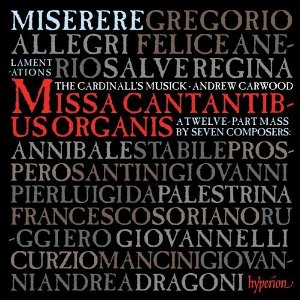Heinrich Biber – Complete Violin Sonatas (1681)
Heinrich Biber – Complete Violin Sonatas (1681)
Bojan Čičić | The Illyria Consort
Delphian DCD34334
Charles Burney, writing in the 1770s, described these sonatas as the “most difficult and most fanciful music” of their time, and this magazine has celebrated several recordings in recent decades each time commenting on the dazzling virtuosity of the performer. This record of the month is no exception as we welcome a new album from Bojan Čičić who cites inspiration from Andrew Manze’s pioneering 1994 recording with Romanesca, and clearly both artists share admiration and flare for for Biber’s harmonic daring and virtuosic imagination.
Wiebke Thormählen's accompanying essay makes a compelling point: we should not let the fame of Biber's Mystery Sonatas eclipse the significance of this 1681 collection since during Biber’s lifetime, these later sonatas also enjoyed considerable acclaim. Unlike the Mystery Sonatas, which lean more on scordatura and religious narrative, these 1681 works connect directly with the listener through secular and personal touches alongside the sacred as the composer sought to evoke altered mental states through musical complexity, a kind of proto-flow situation if you will. Moreover, the 1681 publication even includes a portrait of Biber himself—not reproduced in this album’s material—hinting towards admiration for a composer’s secular virtue alongside that almost spiritual immersion demanded of both player and listener.
If that all sounds too heavy, rest assured the sonatas themselves are a joyful listen and a veritable playground of innovation that suit a nimble, flexible musician like Čičić very well: many open with quasi-improvisatory preludes where the violin is found floating freely over a pedal note, and in these passages we experience some of Čičić's most expressive moments. But since these compositions follow no overall sonata structure what follows is never predictable—Biber juxtaposes contrasting textures, often exploring polyphony, registral extremes, and unusual tunings (such as in Sonata IV, where three strings are re-tuned to evoke D major and Sonata VI with demands re-tuning mid piece). Most notabley there are a delightful profusion of variation-like passages over a ground bass where this ensemble excel in endless inventiveness, but even these are not formulaic. Certainly this composer never rigidly labels or contains his forms. One of my favorite features is the presence of overt dance movements, particularly the cheeky, swaggering gestures in Sonata IV. Throughout, the music (and Čičić's playing) continually underlines why the 17th century is often called the golden age of violin playing: there’s a great combination of subtle nuance, bold contrast, and sheer technical dazzle.
Bojan Čičić | The Illyria Consort
Delphian DCD34334
Charles Burney, writing in the 1770s, described these sonatas as the “most difficult and most fanciful music” of their time, and this magazine has celebrated several recordings in recent decades each time commenting on the dazzling virtuosity of the performer. This record of the month is no exception as we welcome a new album from Bojan Čičić who cites inspiration from Andrew Manze’s pioneering 1994 recording with Romanesca, and clearly both artists share admiration and flare for for Biber’s harmonic daring and virtuosic imagination.
Wiebke Thormählen's accompanying essay makes a compelling point: we should not let the fame of Biber's Mystery Sonatas eclipse the significance of this 1681 collection since during Biber’s lifetime, these later sonatas also enjoyed considerable acclaim. Unlike the Mystery Sonatas, which lean more on scordatura and religious narrative, these 1681 works connect directly with the listener through secular and personal touches alongside the sacred as the composer sought to evoke altered mental states through musical complexity, a kind of proto-flow situation if you will. Moreover, the 1681 publication even includes a portrait of Biber himself—not reproduced in this album’s material—hinting towards admiration for a composer’s secular virtue alongside that almost spiritual immersion demanded of both player and listener.
If that all sounds too heavy, rest assured the sonatas themselves are a joyful listen and a veritable playground of innovation that suit a nimble, flexible musician like Čičić very well: many open with quasi-improvisatory preludes where the violin is found floating freely over a pedal note, and in these passages we experience some of Čičić's most expressive moments. But since these compositions follow no overall sonata structure what follows is never predictable—Biber juxtaposes contrasting textures, often exploring polyphony, registral extremes, and unusual tunings (such as in Sonata IV, where three strings are re-tuned to evoke D major and Sonata VI with demands re-tuning mid piece). Most notabley there are a delightful profusion of variation-like passages over a ground bass where this ensemble excel in endless inventiveness, but even these are not formulaic. Certainly this composer never rigidly labels or contains his forms. One of my favorite features is the presence of overt dance movements, particularly the cheeky, swaggering gestures in Sonata IV. Throughout, the music (and Čičić's playing) continually underlines why the 17th century is often called the golden age of violin playing: there’s a great combination of subtle nuance, bold contrast, and sheer technical dazzle.
[...]
For the full text of this review please visit Gramophone.co.uk (July 2025)



Comments
Post a Comment